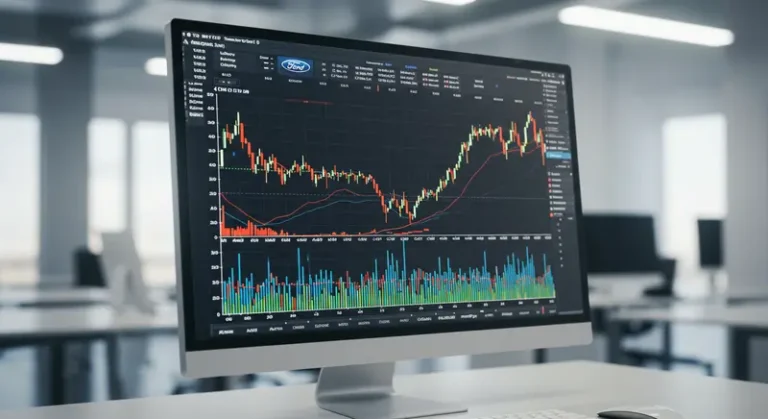FintechZoom Uber Stock: Trends, Analysis, and Investment Strategies
FintechZoom Uber Stock provides comprehensive coverage to investors and businesses looking to make informed decisions to understand the complexities and updates on the UBER stock. Any investor wants to know the Uber business’s current status and market conditions in the country for a profitable investment.
Due to the fast pace of expansion and shifting market dynamics, the analysis of Uber stock is beneficial in recognizing valuable opportunities and threats in long-term financial decision-making. In this article, we will walk through all the trends, analysis, and investment strategies of UBER stock.

Overview of Uber’s Business Model
Uber Technologies, Inc. has dramatically disrupted transport and delivery services since its creation in 2009. It is one of the prominent participants in the sharing economy and a complex supply chain business model based on mobility, meal delivery as a part of Uber Eats, and logistics.
Uber is a platform that brings together drivers and users, restaurants and customers, and collects revenues through service charges and commissions. The company also seeks to develop novel products as a constant aim through testing self-driving cars and extending the range of the delivery platforms to improve existing services and execution.
Current Performance of FintechZoom Uber Stock
FintechZoom never fails to provide updated insights and stock data to its users and the same goes for Uber stock.
Recent Stock Price Trends
As of 2024, Uber has a stock price of about $40. This price shows how investors perceive the company and its growth potential. Lately, companies like Uber have also started regaining consumer attention since the population relies on ride-sharing and food delivery services.
Key Financial Metrics to Monitor
To analyze the performance of Uber, investors need to use key financial ratios. First of all, they should look closer at revenue which shows the amount of money a company makes.
Another metric that should also be considered is the activity, the number of active users is always good for business since it implies more revenue. Moreover, consider their operating expenses through which it is possible to determine how much it costs to operate the business.
Using these indications, investors can be better positioned to determine Uber’s future growth and profitability.
Historical Performance of FintechZoom Uber Stock
Uber Technologies, Inc. (NYSE: UBER) has drastically changed its stocks, since its IPO in May 2019. At first, the stock faced problems: the price less than an IPO caused concerns in terms of profitability and competition in the ridesharing and delivery sphere. An outbreak in 2020 changed people’s habits and made them order Uber Eats more frequently to help its stocks recover.
Some of the significant events associated with Uber’s stock include the introduction of other services such as Uber Freight, global regulatory concerns, and partnerships with some of the most popular food giants. Earlier in 2021, business people had the chance to listen to plans to reach the black by 2023. However, issues such as driver scarcity and increasing operation costs have caused volatility. In late 2023, Uber saw the stock as cautiously optimistic, supported by continual diversification for services and adaptation to the market.
Market Sentiment Surrounding FintechZoom Uber Stock
The general feelings and attitudes of investors reported by FintechZoom towards Uber stock are:
Analyst Ratings and Expert Opinions
Experts maintain positive sentiments towards Uber and tend to give it strong recommendations, such as “buy” or “hold.” This optimism reflects the company’s capacity for market evolution, service line broadening, and operating efficiency. Some analysts view future Uber Eats and ride-hailing growth as leading to improved revenue, while some are concerned with regulation and competition.
Social Media Trends and Public Perception
Over the years, people’s perception of Uber has been influenced by social media. At the same time, the positive discourse conceives of it as innovative and environmentally friendly. The negative response comes from the drivers’ satisfaction and market rivalry uncertainty. Such mixed feedback can build up a somewhat convoluted story about the company, shaping investors’ perceptions and, to a certain extent, the company’s stock rate.
Comparative Analysis with Competitors
Uber is in a competitive market with several recognizable competitors in the ridesharing and delivery submarkets. Current competitors are Lyft, DoorDash, and Grubhub, which have unique business model specifications.
- Lyft: Lyft mainly operates in North America and describes itself as the regional ride-hailing giant in competition with Uber. It has its target customers, but the company has not gained as much profit as Uber. This gives Uber a competitive advantage through coverage within the market and resource diversification.
- DoorDash: In the delivery sector itself, DoorDash has grown significantly in market share and is competing fiercely against Uber Eats, which handles a higher number of orders. However, Uber has a wealthy network of ride-hailing services to promote cross-selling its services, making its competition relatively unmatched.
- Grubhub: Grubhub’s rivals are Uber Eats and DoorDash. The relationship with restaurants has been set, but Uber as a brand holds more leverage, as seen in the sheer logistic advantage in the market.
Insights from FintechZoom’s Competitive Landscape
Regarding the efficiency of integrating services, FintechZoom analyzed to point out that Uber is well-placed against its rivals since the company is flexible regarding transport and deliveries. One of the reoccurring elements that has been pointed out as working well among investors and customers is the constant push for autonomy, improvements in self-driving cars, and a focus on sustainability. Just as Uber currently faces challenges, it’s here that the firm has to employ its scale and technology as the market advances.
Future Projections for FintechZoom Uber Stock
Critical trends for Uber Technologies, Inc. remain positive, and analysts expect further development owing to particular strategic actions and factors.
Many analysts expect a positive trend for Uber’s stock since they are sure that developments in delivery services and the creation of self-driving cars will bring in much money. Thus, an increase in bookings could be due to the growth of orders. Some experts forecast that by the end of 2024, Uber might maintain stable profitability and improve investor trust.
Key Factors Influencing Future Performance
The factors that may impact the future performance of Uber are:
- Market Expansion: One of the possible ways to generate revenues for Uber is to enter new market areas effectively.
- Technological Innovation: The mobility and logistics automation advancements, combined with autonomous vehicles and overall operational improvements, are expected to result in lower operating costs and margins.
- Regulatory Environment: Composure to facing regulations is going to be critical. Optimistic results in the legal and regulatory environment may lead to improvements in the market position.
- Consumer Behavior: The demand may impact changes in trends such as convenient delivery and ride services. Thus, Uber’s ability to successfully predict and adapt to these trends will be the cornerstone behind its continued growth.
Risks and Challenges for FintechZoom Uber Stock
The risks and challenges for FintechZoom Uber Stock are:
Market Volatility and Economic Influences
Uber is strongly influenced by economic cycles. Downswings or declines in economic activity decrease revenues. The stock market’s volatility is closely associated with dramatic changes in the price levels of Uber’s stock. For example, investors’ tendencies are triggered by the overall market performance, which may have implications for assessing a company’s standalone characteristics.
Regulatory Challenges in the Transportation Sector
Legal regulation remains a critical issue that affects Uber’s operation through government regulators in every market. Additional regulation changes and their effects directly influence factors and services that organizations offer.
New legislation and regulatory policies raise operational costs mainly by affecting drivers’ employment status as employees with association benefits.
Investment Strategies for FintechZoom Uber Stock
There are some investment strategies and tips for short-term and long-term investors such as:
Tips for Short-term Investors
- Monitor Market Sentiment: Investors need to keep track of the social media updates, analyst ratings, and overall news that affect Uber’s stock. Immediate responses to such stimuli may be made to reap immediate rewards, such as a spike in sales when a new product is released to the market or reduced sales when negative stimuli are realized.
- Technical Analysis: Chart patterns and indicators should be used to determine when traders will enter the market. Identify significant support and resistance zones likely to influence the trading plan.
- Earnings Reports: The focus should be on the more frequent announcements of the company’s current quarterly earnings. Thereby, an overwhelming performance or positive guidance triggers instantaneous stock price rises.
- Set Stop-Loss Orders: Due to this risk, use stop-loss to reduce the data. To avoid being caught in volatile markets and losses, traders use stop loss.
Tips for Long-term Investors
- Focus on Fundamentals: Focus on assessment of Uber’s financial health, including its revenue outlook, profit potential, and cash generation. A positive fundamental framework makes long-term investments.
- Diversification: Investors need to invest in other stocks in the fintech and tech industries to help lessen the risks involved.
- Patience and Discipline: A critical feature of this form of investment is that such strategies are long-term ones. Steering clear of known market blips as a guideline, the company should stay on course with Uber’s strategic goals.
- Keep an Eye on Innovations: Follow Uber’s technological developments and services. Advancements such as freedom in manufacturing might further improve long-term growth rates than self-driving cars.
Conclusion
The long-term prospects of FintechZoom Uber Stock depend on horizontal diversification into deliveries and breakthrough technological advancements. It has been estimated that profitability is achievable in the long run, with growth trajectory being threatened by market fluctuations and regulations. Non-swing traders are often known to analyze the market, while swing traders should analyze the stock in terms of fundamentals and possible growth. Uber is a perfect investment option, but with a word of caution because this is a saturated market where new entrants and innovations keep emerging.






